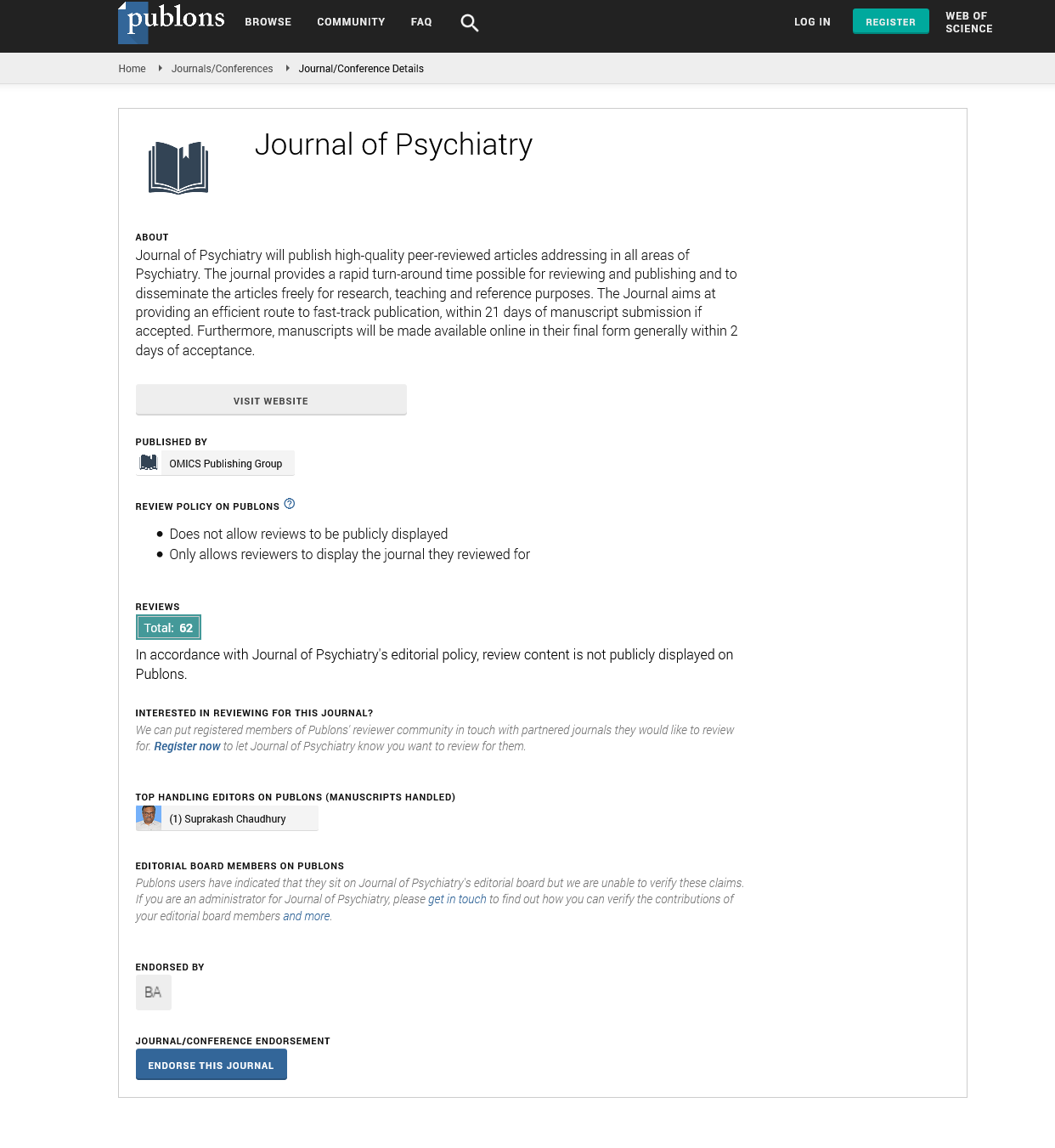Indexed In
- RefSeek
- Hamdard University
- EBSCO A-Z
- OCLC- WorldCat
- SWB online catalog
- Publons
- International committee of medical journals editors (ICMJE)
- Geneva Foundation for Medical Education and Research
Useful Links
Share This Page
Open Access Journals
- Agri and Aquaculture
- Biochemistry
- Bioinformatics & Systems Biology
- Business & Management
- Chemistry
- Clinical Sciences
- Engineering
- Food & Nutrition
- General Science
- Genetics & Molecular Biology
- Immunology & Microbiology
- Medical Sciences
- Neuroscience & Psychology
- Nursing & Health Care
- Pharmaceutical Sciences
Metabolic Syndrome, abdominal obesity and hyperuricemia in a French cohort of patients with Schizophrenia: Results from the FACE-SZ Cohort
Euro Global Summit and Medicare Expo on Psychiatry
July 20-22, 2015 Barcelona, Spain
Guillaume Fond
Posters-Accepted Abstracts: J Psychiatry
Abstract:
Objective: Metabolic syndrome (MetS) is defined by the presence of three or more of the following five criteria: Increased Waist Circumference, Hypertriglyceridemia, Low HDL cholesterol level, high blood pressure, abnormal fasting glucose concentration. High prevalence of MetS has been reported in patients with schizophrenia. However, abdominal obesity, defined by Increased Waist Circumference and Hypertriglyceridemia, was suggested to be a better predictor than MetS for cardiovascular mortality. Prevalence of abdominal obesity in schizophrenia is uncertain. To complete the evaluation of cardiovascular risk in schizophrenia, uric acid levels were also explored as hyperuricemia (HU) was suggested to be both an independent risk factor for greater somatic comorbidity and a global metabolic stress maker in patients with schizophrenia. The aim of this study was to estimate the prevalence of MetS, abdominal obesity and HU and to examine the association between metabolic features with HU in a cohort of French patients with schizophrenia or schizo-affective disorder (SZ) followed in the network of Expert Centres for schizophrenia within the FondaMental Foundation. Method: 240 SZ patients (age=31.4 years, male gender 74.3%) assessed with the Structured Clinical Interview for DSM-IV Axis I Disorders were systematically included between 2009 and 2014. Socio-demographic and clinical characteristics were collected with a computerized medical database and a blood sample was drawn. Metabolic syndrome was defined according to the International Diabetes Federation and HU if serum uric acid level was above 360 ?mol/L. Results: 26.7% of the population met criteria for MetS, 24.2% for abdominal obesity and 19.6% for HU. The vast majority did not receive adequate treatment: only 10% of patients with hypertension received a specific treatment, 18% for high fasting glucose and 8% for dyslipidemia. In terms of risk factors, multiple logistic regression showed that after taking into account the potential confounders (age, gender, education level, tobacco consumption, psychotic symptomatology, age at onset, and type of antipsychotic treatment), the risk for HU was higher in males (OR= 5.9, IC95[1.7-21.4]) and with subjects with high waist circumference (OR =3.1, IC95[1.1-8.3]) or hypertriglyceridemia (OR=4.9, IC95[1.9-13]). No association with hypertension, low HDL cholesterol or high fasting glucose was observed. Conclusions: The prevalence of MetS, abdominal obesity and hyperuricemia is elevated in French patients with schizophrenia, all of which are considerably undertreated. In these patients, hyperuricemia appears to be very efficiently predicted by metabolic parameters. The results highlight the need for integrated metabolic-based care in patients with schizophrenia, which call for an improvement in interaction between psychiatrists and primary care providers and justifies the monitoring of these biological parameters.

